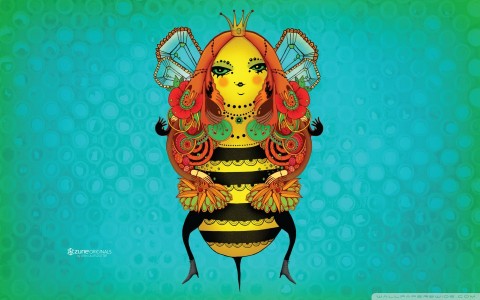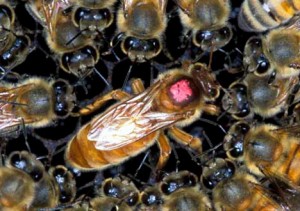Queen Bee
A mated adult Queen Bee is the mother of all the bees in her hive. And she is normally the only Queen in the hive. She is specially fed by the worker bees. She rules.
Then there are Virgin queens who have yet to mate with a drone. They are not as big as worker bees and mated queens, but are highly active and energetic. Virgin queens have the advantage of being able to be accepted into the entrance of any queenless hive as opposed to a mated queen, who is seen as a stranger whose life could be in danger from the worker bees.
Virgin queens are rather competitive, and will seek out any Virgin queen rivals and try to kill them. They will quickly find and kill any emerged or even un-emerged Virgin queens, killing them in the cell. When swarm mode is activated, some Virgin queens disperse to the leaving swarm and some stay behind. Wherever the Virgins land, they resume business as usual, fighting to the death until only one remains. If the prime swarm has a virgin queen and the old queen, the old queen will usually be allowed to live. The old queen continues laying. Within a couple of weeks she will die a natural death and the former virgin, now mated, will take her place.
Wow…a lot of female dynamics going on in these hives, while the male worker bees are busy doing there thing.
Mated queens and Virgin queens make a noise called “piping.” The former will do so after being released in the hive, and the latter before they emerge from their cell. This piping often occurs when there is more than one queen in a hive. It can be a signal to worker bees which queen bee is the most worthy of their support.
The surviving Virgin queen bee will choose the day she flies out of the hive, and into a swarm of drone bees where she will mate with about 13-15 drones. Mating occurs in flight. She will carefully and selectively release sperm for the rest of her 2-7 years of life.
If this young Virgin queen does not mate during this time, she will lay no eggs, and she will become a drone layer. It often signifies the end of the colony since there will be no larvae from which to raise worker bees nor a new queen. The Queen Bee in any bee hive colony is the life of the colony.
Queen Bee



